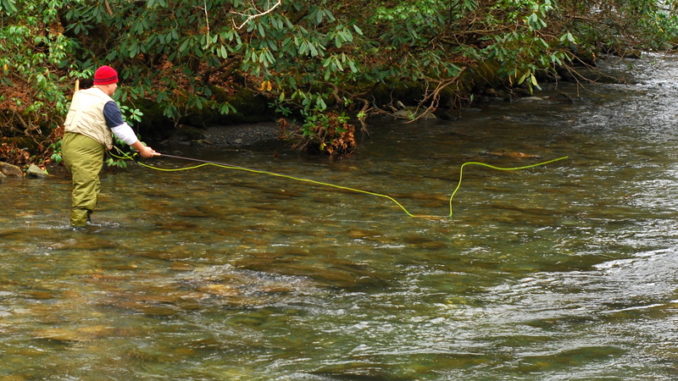
This special fly works in all kinds of situations
Streamers are flies that imitate a variety of aquatic life, especially minnows, and when fly fishers fish big waters for big trout, they’ll usually tie on a streamer.
One of the most-effective streamer patterns is the Sculpzilla, a fly that imitates a sculpin, a bottom-feeding forage fish that can be found in most freshwater-streams and lakes from coast to coast. Originated by Solitude Fly Company, the Sculpzilla can be used in all types of streams and in all types of water conditions.
Marc Hipp, fishing manager for Brookings Fly Shop in Cashiers, said, “Trout will hit a Sculpzilla in shallow water, ripples and deep pools, You can fish it in small high-gradient streams or in large, valley streams, and it works equally well for native trout and stocked trout.”
Hipp said the best times of the year to fish with a Sculpzilla and other streamers are spring and fall, when trout are more active.
“A trout will hit a streamer when water levels go up after a heavy rain, even in the summer,” said Hipp, who recommends using a No. 10 Sculpzilla, the most-popular size, or a No. 6, depending on water conditions. A 5-weight rod will work fine for a No. 10 streamer, but you’ll need a 6- or 7-weight rod for a No. 6 streamer.
“Don’t go light on the tippet,” Hipp said, “Use fluorocarbon: 3X for a No. 10 and O-2X for a No. 6 fly. When a trout hits a streamer, it will hit hard, and you should have enough tippet strength to accommodate heavy strikes.”
Hipp uses either a canoe or loop knot to attach a streamer to a tippet. The loop at the end of the tippet provides extra strength for a hard strike and extra insurance that the tippet won’t break when a big trout hits.
Hipp said the Sculpzilla can be fished either downstream or upstream. His preference is downstream.
“You can quarter the cast and let it drift naturally into the current, or you can cast straight downstream and hold the fly in the current, stripping the fly in short spurts of 6 inches to a foot.”
One especially effective technique is to pop the fly to the side and let it float back into the current. “You’ll usually get a hit on the third or fourth try,” he said.
Preferred colors for Sculpzilla patterns are natural brown, white or black.
“They all work equally well,” said Hipp, who views the Sculpzilla as a tough fly to tie due to the variety of materials required, including a cone head with red eyes, black thread, olive ice dubbing, marabou and chickabou.
Two hooks also are required: the main hook and a second hook with the barb removed. The placement of the second hook helps give the fly its articulation, which makes it so effective.
Unless you plan to tie a bunch of flies, it’s cheaper to buy Sculpzillas already tied. The average cost is about $3.
Other recommended streamers for mountain streams include the Kiwi Zonker, Muddler Minnow, Woolly Bugger and mini-loop Sculpin. The mini-loop is similar to the Sculpzilla, except that its hook rides on top rather than beneath the body, which keeps the fly from snagging the bottom, Hipp said.
The old-reliable Woolly Bugger should be included in every fly box in a variety of colors: chartreuse, brown, black and white. Hipp said purple has turned out to be a sleeper color.
The Woolly Bugger is a versatile fly that can be dead-drifted or stripped in short pulls. Sizes can run as large as a No. 4 or as small as a No. 12, depending on stream conditions.
The Sculpzilla hasn’t been around as long as some of the more standard streamers — five or six years — but its popularity is gaining momentum nationwide as a fly that attracts big trout.
Hatches usually diminish as summer progresses, but even small hatches can attract trout.
For July and August, the following dry flies are recommended: Nos. 16-14 Little Yellow Stone, Nos. 16-14 Light Caddis, Nos. 16-14 Light Cahill, Nos. 18-16 Blue-Winged Olive (hatches usually occur on overcast days), Nos. 16-14 Female Adams, Nos. 16-14 Green Palmer, Nos. 16-14 Tennessee Wulff, Nos. 16-14 Parachute Adams and Nos. 18-14 Elk Hair Caddis.
Nymphs include a No. 10 Secret Weapon, Nos. 12-10 Pheasant Tail, Nos. 10-8 Brown Stone and Nos. 10-8 Yellowhammer.
Summer terrestrials also provide plenty of summer action: Nos. 12-10 Inchworm, Nos. 12-10 Beetle, No. 11 Ant, No. 10 Japanese Beetle, Nos. 12-10 Grasshopper and Nos. 12-10 Cricket.

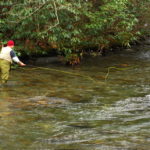
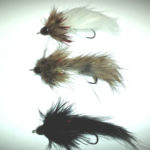

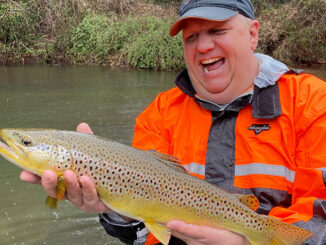
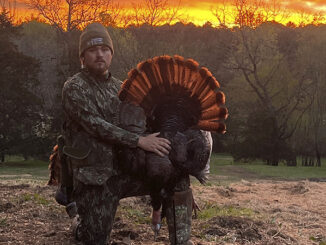

Be the first to comment